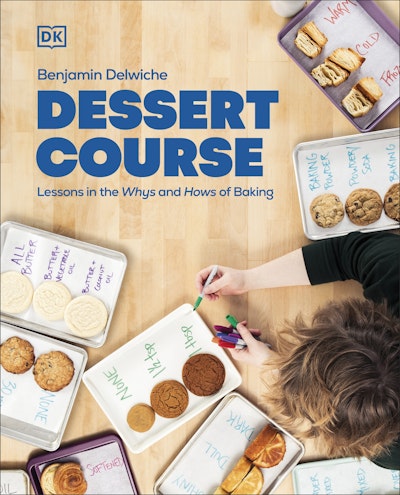The beauty of the Reverse Creaming Method is the fine and velvety texture it helps create. The way that it is able to accomplish this plush interior is by minimizing gluten formation.
Mixing Method: Reverse Creaming
Yield: One 9x9-inch (23x23cm) cake
Prep Time: 30 minutes
Bake Time: 40 to 45 minutes
SPECIAL EQUIPMENT
- Stand mixer with paddle attachment
- 9x9-inch (23x23cm) square baking pan
INGREDIENTS
For the cake
- 1¾ cups (228g) cake flour, sifted
- 2 teaspoons baking powder
- ½ teaspoon table salt
- 1¼ cups (25Og) granulated sugar
- 1 stick (113g) unsalted butter, softened
- ½ cup (113g) buttermilk
- 3 large eggs
- 2 teaspoons vanilla extract
For the crumb
- ½ cup (lOOg) light brown sugar
- 1¾ cups (228g) cake flour, sifted
- 2 teaspoons cinnamon
- ¼ teaspoon table salt
- 2 teaspoons vanilla extract
- 1 stick (113g) unsalted butter, softened
METHOD
For the cake
- Preheat the oven to 35O°F (18O°C) and prepare the baking pan with nonstick baking spray and a parchment paper sling across the width of the pan (see page 39).
- Add the flour, baking powder, salt, and sugar to the bowl of a stand mixer. Mix on low speed to evenly distribute the ingredients.
- Add the butter to the mixing bowl and mix on low speed until the dry ingredients are completely coated with the butter and the mixture resembles coarse crumbs.
- Add ¾ of the buttermilk and turn the mixer speed up to medium. Mix for a full minute and a half until smooth and slightly aerated. Stop the mixer and scrape the bottom and sides of the mixing bowl and the paddle attachment.
- Whisk the remaining buttermilk together with the eggs and vanilla. Add the liquid into the batter in two additions, letting the mixer run on medium-low for 20 seconds between each addition.
- Pour the cake batter into the prepared pan and smooth the top.
For the crumb
- In the same mixing that you made the cake in, mix together all the dry ingredients.
- Add the butter and mix on medium-low speed until coarse crumbs form.
For assembly
- Sprinkle the crumbs on top of the cake batter and bake for 40 to 45 minutes or until golden brown and a toothpick inserted in the center comes out with just a few moist crumbs attached.
- Remove from the oven and let cool in the pan for 5 to 10 minutes before lifting from the pan using the parchment paper and moving to a baking rack to cool completely.
Why The Steps Are Important
The beauty of the Reverse Creaming Method is the fine and velvety texture it helps create. The way that it is able to accomplish this plush interior is by minimizing gluten formation. As we saw in the Wet and Dry Method (page 31), one way to reduce gluten development is by minimizing mixing. The other way is to coat the flour in fat and discourage the proteins from linking and creating a stretchy web.
For the most part, this mixing method calls for moderate mixing speeds and minimal mixing times. Still, though, the cake needs some physical aeration to work in conjunction with the leavening to create a nice rise in the oven (unlike the Creaming Method, the rise will be modest, but that again is part of the allure of the Reverse Creaming Method: a nice, level top).














